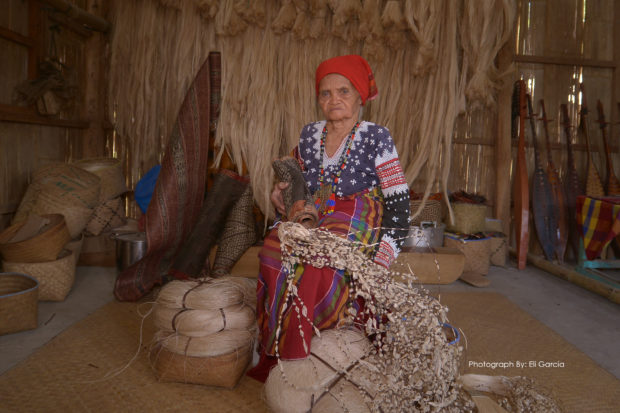POLOMOLOK, SOUTH COTABATO—The late B’laan tribe weaver Yabing Masalon Dulo, an awardee of the Gawad Sa Manlilikha ng Bayan (Gamaba), and who was declared a “national living treasure,” will be accorded state burial on Feb. 10 here, her grandson said on Saturday. Dulo died before dawn on Jan. 26 in her sleep. She was 106.
Arthur Gulili, the family spokesperson, said the burial of his grandmother, fondly called Fu Yabing by those who knew her, would include a 21-gun salute.
Dulo was a master of “mabal tabih,” the art of ikat (reserve dyeing) and weaving. Mabal is a B’laan term for the weaving process using abaca fibers, while tabih refers to the finished handwoven cloth and the traditional B’laan tubular skirt or “malong.”
The national artist had been in her sickbed in the last two months and was in and out of hospital since last year.
She will be laid to rest next to the traditional weaving center she established in her community in Sitio Amgu-o, Barangay Landan.Exemplary oeuvre
Dulo was officially declared a national living treasure on Jan. 6, 2017, in a selection process undertaken by the National Commission for Culture and the Arts (NCCA), the government agency tasked with administering and implementing Gamaba.
She was honored for keeping alive her community’s traditional weaving process and sharing her skills to others.
The B’laan elder accepted the award from President Rodrigo Duterte in 2018 during a formal ceremony in Malacañang.
“We will be forever grateful to her for the pride that she brought to the B’laan tribe,” Gulili said. “She left a legacy that our generation will continue and will pass on to the next one.”
“Her peerless mastery of the B’laan Mabal Tabih is manifest in her impeccable work,” the NCCA said in announcing her death. “Her exemplary oeuvre has brought pride to her community, animating the interest of many young B’laan in their remarkable cultural heritage.” —BONG SARMIENTO INQ
